Art Using in Advertisements Roy Lichtenstein Used in Advertisements
A key figure in the Pop art motion and beyond, Roy Lichtenstein grounded his profoundly inventive career in imitation—get-go by borrowing images from comic books and advertisements in the early on 1960s, and somewhen encompassing those of everyday objects, artistic styles, and art history itself. Referring to Lichtenstein'due south equalizing treatment of the subjects he chose for his art, Richard Hamilton, a fellow Pop artist, wrote in 1968: "Parthenon, Picasso or Polynesian maiden are reduced to the same kind of cliché by the syntax of the print: reproducing a Lichtenstein is like throwing a fish dorsum into water."1
Lichtenstein later recalled that 1961, the yr he completed Girl with Brawl, marked a interruption with both his own abstruse style and "prevailing taste" in the art world. "Although nearly anything seemed to exist off-white subject area thing for art," he recalled, "commercial art and particularly cartooning were not considered to be amongst those possibilities."ii The effigy from Daughter with Ball came from a printed advertisement for the Mount Airy Lodge, in Pennsylvania's Pocono Mountains, and he based another painting, Drowning Girl, on a comic volume cover. In these two paintings and throughout his other piece of work, Lichtenstein would copy the source image by hand, adjusting its composition to accommodate his narrative or formal aims, and so trace this contradistinct sketch onto the canvas, aided past a projector.
In this rigorously manual process, he used perforated templates to replicate and oftentimes exaggerate the dot patterning usually used in printing imagery. Known equally Ben-Day dots, this patterning became a signature element of his style, which incorporated the expect of mechanical reproduction into the fine-art earth of painting. His transformations of the source image typically included reducing the colour palette to saturated primaries, eliminating incidental details, heightening contrasts, and "emphasizing the pictorial clichés and graphic codes of commercially printed imagery."3 In Drowning Girl, for case, Lichtenstein cropped out much of the original scene and modified the statement in the text bubble, amplifying this epitome of a dryad in distress.
Lichtenstein soon turned his attending from the clichés of commercial print culture to the aesthetic clichés of high art.four With assuming, graphic simulations of brushstrokes in prints like Brushstroke and Brushstrokes, for case, he parodied the autographic marking-making of Abstract Expressionism. Yet where Jackson Pollock had been seen to imbue his skeins of paint with a bravura energy and force, Lichtenstein turned that device into something clichéd, commercial, and reproducible. "Visible brushstrokes in a painting convey a sense of chiliad gesture; merely in my hands, the brushstroke becomes a depiction of a grand gesture," he later said.five
Fine art history proved an enduringly rich field for Lichtenstein'south transformations. Concurrent with his Brushstrokes series were explorations of the mural genre and, in 1969, ii volleys at Claude Monet. Monet had also worked serially, devoting multiple canvases to a sustained study of the changing sun equally it moved across the facade of the Rouen Cathedral or haystacks in a field. With his Cathedral Series and Haystack Serial, Lichtenstein reprised those motifs in his signature Ben-Day dots, making Impressionism, in his words, "industrial."6 In Artist's Studio "The Dance", Henri Matisse'south Dance (II) fills the back of a studio suffused with additional references to the artist, from the lemons (a favored motif) to the fair-skinned driftwood (echoing the dancers' sinewy bodies) to the musical notes streaming in the open up window. In other paintings from this series, Lichtenstein included reproductions of his own work, starting time a lasting practise of self-quotation.
In 1992, Lichtenstein expanded his representational system into a room-sized canvas, Interior with Mobile. Painted in almost exclusively primary colors outlined in solid black, with space described in planes of unmodulated color, stripes, and Ben-Solar day dots, it was relentlessly flat, even so large enough to walk into—an artificial space that pretended, through its size, to be existent. Throughout his career, Lichtenstein confounded such oppositions—betwixt reality and artificiality, high art and mass culture, abstraction and figuration, and the manual and mechanical—to reveal their interdependence.
Introduction past Natalie Dupêcher, independent scholar, 2018
- Introduction
- Roy Fox Lichtenstein (; October 27, 1923 – September 29, 1997) was an American popular artist. During the 1960s, forth with Andy Warhol, Jasper Johns, and James Rosenquist amongst others, he became a leading figure in the new art movement. His piece of work defined the premise of pop art through parody. Inspired by the comic strip, Lichtenstein produced precise compositions that documented while they parodied, often in a tongue-in-cheek manner. His work was influenced past popular advertising and the comic book style. His artwork was considered to be "disruptive". He described pop art as "non 'American' painting merely actually industrial painting". His paintings were exhibited at the Leo Castelli Gallery in New York Urban center. Whaam! and Drowning Girl are by and large regarded as Lichtenstein's about famous works. Drowning Girl, Whaam!, and Await Mickey are regarded as his most influential works. His most expensive slice is Masterpiece, which was sold for $165 million in January 2017.
- Wikidata
- Q151679
- Introduction
- Roy Lichtenstein attended classes at the Parsons Schoolhouse of Pattern and Art Students League before enrolling in the Fine Arts program at Ohio State in 1940. He was drafted into the United States Army, but was discharged and returned to Ohio in 1946 to terminate his master'south caste. In 1957 he accustomed a teaching position at the State University of New York in Oswego, all the while pursuing his art career and gradually shifting his focus towards Expressionism. He began teaching at Rutgers Academy in 1960, and by 1961, he had created his first paintings of cartoon and comic strip icons with his trademark use of Benday dots. By 1964, Lichtenstein was one of Popular art'due south most recognized, all the same controversial, artists.
- Nationality
- American
- Gender
- Male
- Roles
- Creative person, Decorative Painter, Cinematographer, Designer, Jewelry Designer, Decorative Artist, Graphic Creative person, Painter, Sculptor
- Names
- Roy Lichtenstein, Roy Flim-flam Lichtenstein
- Ulan
- 500013596
Information from Getty'south Matrimony List of Artist Names ® (ULAN), made bachelor under the ODC Attribution License
-
Associated art terms include Pop fine art.
154 works online
-
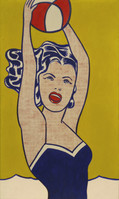
Roy Lichtenstein
Daughter with Ball
1961
-
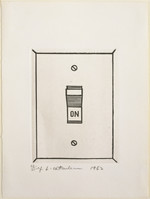
Roy Lichtenstein
On (plate 11) from The International Album of Contemporary Engraving: The International Avant-Garde, Book five: America Discovered (Anthologia internazionale dell'incisione contemporanea: Fifty'Avanguardia internazionale: Volume 5: Scoperta dell'America)
1962, published 1964
-
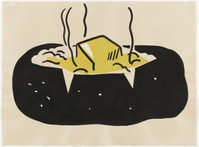
Roy Lichtenstein
Baked Potato
1962
-
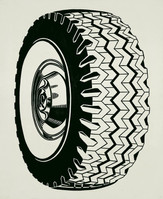
Roy Lichtenstein
Tire
1962
-
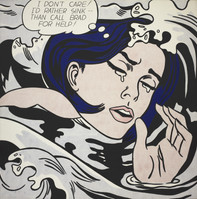
Roy Lichtenstein
Drowning Girl
1963
-

Roy Lichtenstein
Foot Medication
1963
-
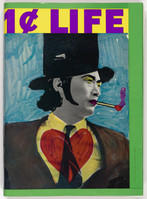
Various Artists, Pierre Alechinsky, Karel Appel, Enrico Baj, Alan Davie, Jim Dine, Öyvind Fahlström, Sam Francis, Robert Indiana, Alfred Jensen, Asger Jorn, Allan Kaprow, Kiki (Kiki O. Thousand.) Kogelnik, Alfred Leslie, Roy Lichtenstein, Joan Mitchell, Claes Oldenburg, Mel Ramos, Robert Rauschenberg, Jean-Paul Riopelle, James Rosenquist, Antonio Saura, Kimber Smith, One thousand.R.H. Sonderborg, Walasse Ting, Bram van Velde, Andy Warhol, Tom Wesselmann
i¢ Life
1963–64, published 1964
-
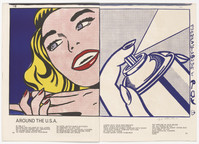
Roy Lichtenstein
Girl (double page headpiece, pages 118 and 119) from 1¢ Life
1963, published 1964
-
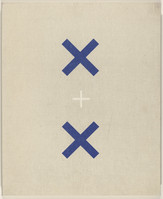
Diverse Artists, Ad Reinhardt, Robert Indiana, Larry Poons, Roy Lichtenstein, Stuart Davis, Robert Motherwell, Ellsworth Kelly, Frank Stella, Andy Warhol, George Ortman
X + X (Ten Works by X Painters)
1964
-
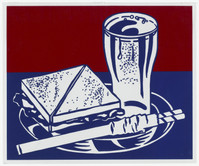
Roy Lichtenstein
Sandwich and Soda from X + X (Ten Works past X Painters)
1964
-
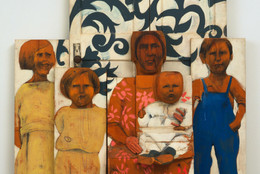
412: Domestic Disruption
Ongoing
Collection gallery
MoMA
-
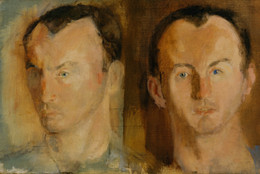
407: Frank O'Hara, Lunchtime Poet
Fall 2019–Summertime 2021
Collection gallery
MoMA
-
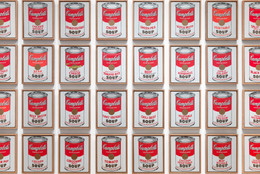
412: From Soup Cans to Flying Saucers
Fall 2019–Fall 2020
Collection gallery
MoMA
-
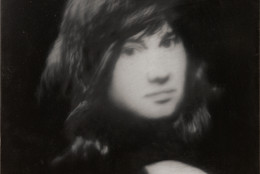
The Long Run
Nov eleven, 2017–May five, 2019
MoMA
-
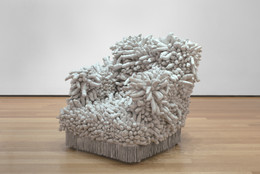
From the Drove:
1960–1969 Mar 26, 2016–Mar 19, 2017
MoMA
-
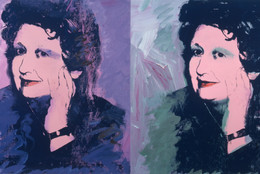
Ileana Sonnabend: Ambassador for the New
Dec 21, 2013–Apr 21, 2014
MoMA
-
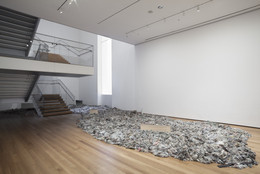
Painting and Sculpture Changes 2013
January 1–Dec 31, 2013
MoMA
-
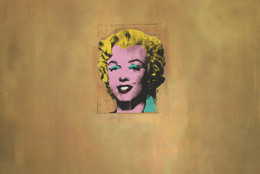
On to Pop
Sep 29, 2010–May ix, 2011
MoMA
-

MoMA Highlights: 375 Works from The Museum of Modern Fine art Flexibound, 408 pages
-
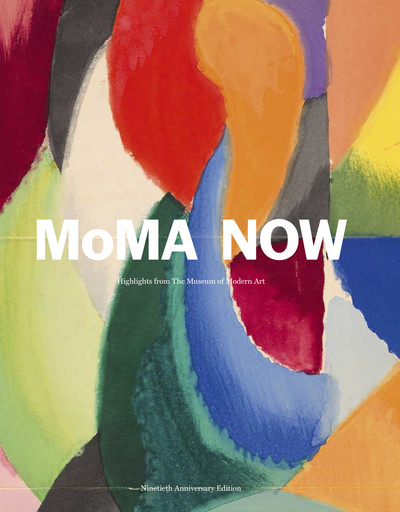
MoMA Now: Highlights from The Museum of Modern Art—Ninetieth Anniversary Edition Hardcover, 424 pages
-

Roy Lichtenstein Paperback, 48 pages
-
The Drawings of Roy Lichtenstein Exhibition catalogue, Clothbound, pages
-
The Drawings of Roy Lichtenstein Exhibition catalogue, Paperback, pages
If you would similar to reproduce an paradigm of a work of art in MoMA's collection, or an paradigm of a MoMA publication or archival material (including installation views, checklists, and press releases), please contact Art Resource (publication in North America) or Scala Athenaeum (publication in all other geographic locations).
MoMA licenses archival audio and select out of copyright film clips from our film collection. At this fourth dimension, MoMA produced video cannot be licensed past MoMA/Scala. All requests to license archival audio or out of copyright moving picture clips should exist addressed to Scala Archives at [email protected]. Motion picture picture stills cannot be licensed by MoMA/Scala. For access to motion picture film stills for research purposes, please contact the Movie Study Center at [e-mail protected]. For more information about motion picture loans and our Circulating Film and Video Library, please visit https://www.moma.org/research-and-learning/circulating-film.
If you would like to reproduce text from a MoMA publication, please email [email protected]. If y'all would like to publish text from MoMA's archival materials, please fill out this permission form and send to [electronic mail protected].
This record is a piece of work in progress. If you have additional data or spotted an error, please send feedback to [email protected].
Source: https://www.moma.org/artists/3542
0 Response to "Art Using in Advertisements Roy Lichtenstein Used in Advertisements"
Post a Comment